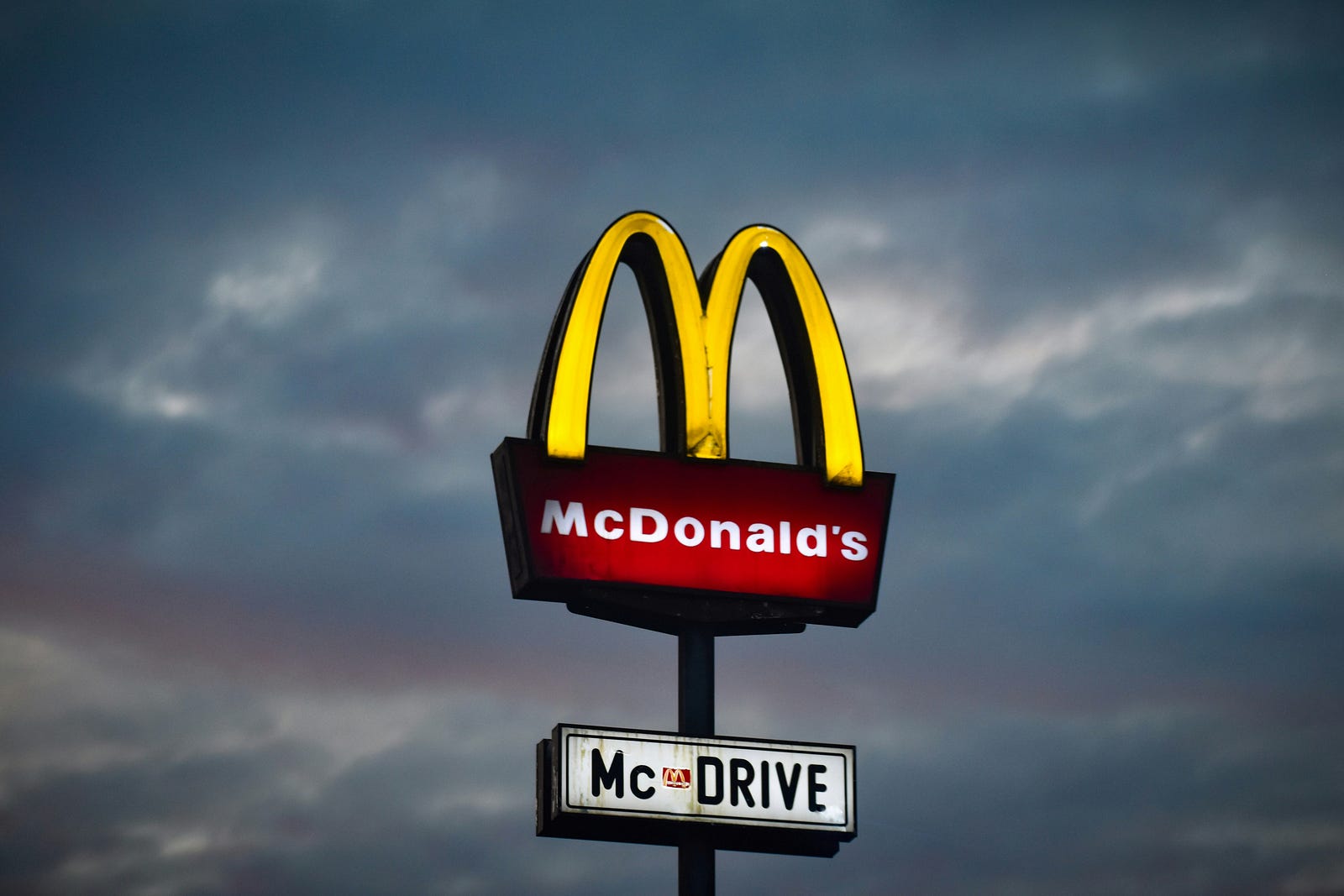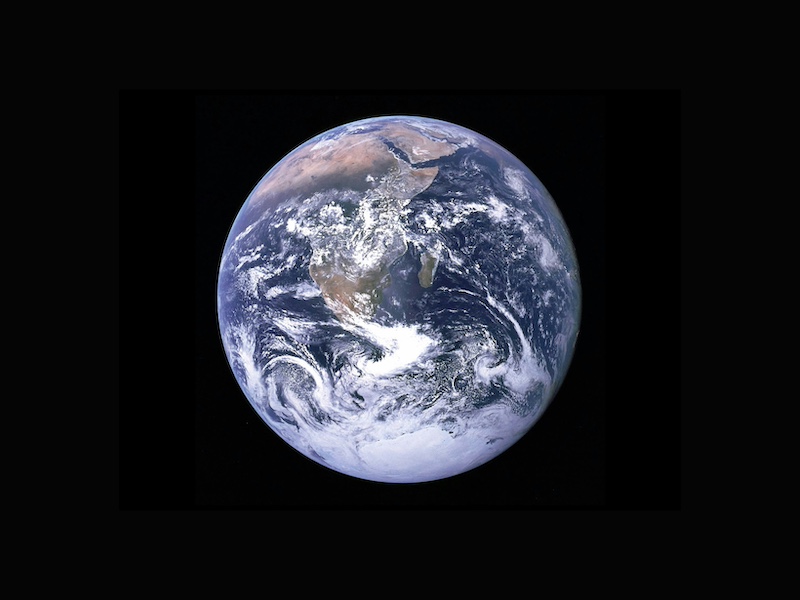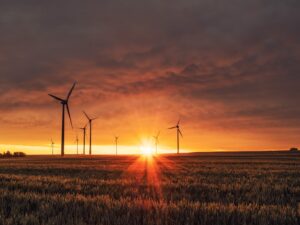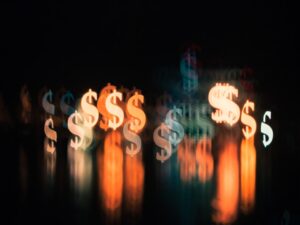Whether it’s by design or disaster, our voyage into overshoot will come to an end.
On its voyage to the moon in 1972, the Apollo 17 spacecraft took one of the most iconic photos in history. The ‘Blue Marble’ shows the majestic beauty of Earth, it reveals the planet’s isolation and vulnerability when contrasted against the void of deep space. It also reveals the planet’s boundaries. This may be a glaringly obvious point to make, but the idea the Earth is limited by those boundaries is one of, if not, the most, controversial facts there is. The controversy revolves around the idea of ecological overshoot.
While ‘ecological overshoot’ isn’t a phrase often uttered in the common vernacular, we first entered it in the 1970s. So what exactly is ecological overshoot, and why is it so controversial?
The plight of a reindeer herd
On the, what is it, this isn’t the first time we’ve triggered overshoot.
In The Rise and Fall of a Herd of Reindeer, Victor Scheffer explains how, in 1911, the US government placed 40 reindeer on the Pribilof Islands in Alaska to provide the native residents with a sustained source of fresh meat.
The herd flourished on St. Paul Island and by 1938 it numbered 2,000 members. But then something strange happened. Over the next twelve years, the herd suffered catastrophic losses. By 1950, it comprised a miserly eight members.

The herd initially flourished due to the unnatural environment they were placed in. There were no predators on St. Paul Island and lichen, a form of moss, provided the reindeer a plentiful supply of food for the winter months. As a result, the reindeer herd increased in size. The lichen could keep up with demand when the herd numbered a few hundred. But more reindeer meant more demand placed on the lichen.
This is where the herd began to have problems.
Reindeer, just like all living things, interact to form ecosystems. Ecosystems provide the conditions for life to flourish, but they can only do so within limits defined by an area’s carrying capacity.
In Population, Sustainability and Earth’s Carrying Capacity, Gretchen Daily and Paul Ehrlich define carrying capacity as the maximum “population size of a given species that an area can support without reducing its ability to support the same species in the future.”
Carrying capacity is influenced by the size of an ecosystem, the characteristics of the area and the organisms that live within it. Larger or richer areas, like rainforests, have a higher carrying capacity than drier, sparser areas, like deserts. Similarly, an ecosystem will be able to support a larger population with low energy requirements, like lizards, than a species with higher energy requirements, such as birds, who have the same body-mass as the lizards.

The land area of St. Paul Island is 26,500 acres which means that as Scheffer argues, “at the peak of the population in 1938, there were only 13 acres of land for each deer…on this basis, the reindeer population was at least three times the carrying capacity of the range.”
When the needs of a species exceed the capacity of an area, it creates a state of ecological overshoot. In the case of the reindeer herd, their needs exceeded the regenerative capacity of the lichen on St.Paul Island, as a result, the lichen disappeared as the population peaked in 1938. Without a food source for the winter months, the herd was devastated by starvation and disease over the next twelve years.
The great acceleration
The challenge we face is that we’ve induced ecological overshoot on a planetary scale. This has happened for a few reasons. Firstly, the human population has exploded. At the beginning of the nineteenth century, after thousands of years, the population hit a billion people for the first time.
By 1920, there were two billion people; by 1960, three billion. Four billion came in 1974; five billion just thirteen years later. By 1999, six billion people roamed the Earth. By 2011, there were seven billion people.
In 2022, the eight billion milestone was hit.
An increasing population wouldn’t be an issue in and of itself. But this explosion has coincided with a feverish increase in human activity, known as ‘The Great Acceleration’.
In the second half of the twentieth century, the global economy grew sixfold. Between 1950 and 2010, the human population nearly tripled. In 1950 the world produced 1 million tonnes of plastics, today we produce around 300 million tonnes. In that time, energy consumption tripled.
The number of McDonald’s restaurants, an icon of globalisation, increased from one restaurant in America in 1954, to over 36,000 restaurants in over 100 countries in 2021.

Every conceivable thing has increased exponentially, from air travel to automobiles to telecommunications; the Great Acceleration has created an avalanche of consumable goods and services that have led to higher living standards.
And it’s all thanks to increases in production which have resulted from economic growth. The issue with growth is that to produce more, you need to make more. So as production has increased, so has the amount of energy and resources we need to achieve those increases.
Since the Industrial Revolution, economic growth has led to miraculous increases in living standards for many, but higher living standards come with a horrifying cost.
Ecological overshoot
More people consuming more stuff leads to an increase in our collective ‘ecological footprint’. The ecological footprint measures how fast we consume resources and generate waste compared to how fast nature can absorb our waste and generate resources.
Every year, the Global Footprint Network uses the ecological footprint to assess if, and when, our demands on the Earth exceed what Earth can replenish in that year.
The graph shows that since 1971 the demands we make on the Earth to produce the goods and services we then use to support our lifestyles exceeds what Earth can supply. In short, we’ve been in a state of ecological overshoot for over fifty years.

Overshoot has accelerated over time as our collective ecological footprint has increased. We now require 1.75 Earths to provide for our wants and needs as a species.
The consequences of overshoot
The outcome of overshooting an entire planet’s carrying capacity is catastrophic. Overshoot has led to a climate crisis. It has led to the annihilation of life on Earth, which is why we are the first species to have ever triggered a mass extinction event. It has ravaged ecosystems, which is why the Amazon rainforest is on the verge of dying.

In a similar way to the reindeer herd, the ultimate risk of overshoot is that it will trigger hostile conditions that will make it increasingly difficult to provide for the needs of humanity.
A hostile Earth will translate into weather extremes such as severe droughts, floods and more ferocious storms. The outcomes will be food shortages, water scarcity and price spikes — to name a few. A hostile Earth will lead to global unrest, chaos and inevitability, increased tensions that will so easily trigger all-out war as countries fight for scarce resources. Massive loss of life is likely to follow.
Escaping overshoot
The inconvenient reality of overshoot is that the current global economic system can’t be maintained. That’s what makes our global society unsustainable.
When it comes to escaping overshoot, there are two options. We either escape through the aforementioned disaster — not a desirable option. Or, we design our way out.
Escaping by design involves dramatically reducing our ecological footprint, but how exactly do we do that? There’s a formula that shows us the options we have.
I = A x P x T
I represents the total environmental impact, P represents the population, A represents affluence, and T represents the environmental impact per unit of product/service consumed.
The global population is forecast to increase to nearly ten billion people by 2050 and over 11 billion by 2100. Affluence, meanwhile, is wrapped up in ever-increasing rates of consumption. So the only viable political and economic option to reduce the total environmental impact is to focus on T — the environmental impact per unit of product or service consumed.
Many companies have embraced a ‘whole system design’ approach known as dematerialisation. The idea is to make the same product or service with fewer materials.
Dematerialising products can induce a rebound effect, where an efficiency that reduces the impact per unit of product/service consumed actually ends up increasing the total environmental impact.
This can happen for a few reasons. If a product is cheaper to produce, the company can sell it at a lower price, encouraging more people to buy it. So while ‘T’ decreases for each unit produced, with greater demand for a cheaper product, ‘I’ increases because more products are sold.
The rebound effect can get even worse because those who buy the product at a lower price now make savings and can use that disposable income to buy other products.
Fundamentally, the problem comes down to an economy that is designed to grow and a society that works in service of that goal.
In Enough is Enough, Rob Dietz and Dan O’Neill show that between 1980 and 2007, the material intensity of the global economy, measured as the amount of biomass, mineral and fossil fuels required to produce a dollar of world GDP, decreased by 33 per cent, which is a remarkable achievement. But world GDP grew by 141 per cent at the same time, so total resource use still increased by 61 per cent.

In a trap of our own making
While efforts to dematerialise products are well-intended, without questioning the rules of the game, efficiencies just increase productivity, which locks in further environmental impacts.
That’s why overshoot is so controversial. To exit overshoot by design we must question the rules of the game.
Overshoot feeds into a rather obvious truism revealed by the Blue Marble, infinite growth on a finite planet is impossible. But conventional economics dismisses the idea of limits to growth. It has to be because growth is the beating heart of capitalism. If the economy doesn’t grow, it will collapse.
Economic growth, and therefore capitalism, is unsustainable by design because to continually grow, the economy requires continual increases in production. To increase production you need more inputs of energy and resources. No matter how efficient we make processes, there’s no getting around this fact.
More growth will see overshoot accelerate even further. The two are inextricably connected. This is the argument made by post-growth economic theories like degrowth. The central argument of degrowth is that we must reduce humanity’s ecological footprint by scaling down the economy while ensuring well-being is maintained.
The challenge with degrowth gaining widespread support is that decreasing the size of the economy will involve people having to give up elements of consumerism. It will feel like living standards are reducing.
It would hardly make for a convincing election campaign. Vote for me, become poorer! Would you vote for such a pledge? Even if it’s claimed reducing consumption won’t impact well-being, no one will buy into it.
We are caught in a trap of our own making. This is nobody’s fault. The problem we have though is that economic growth has become so important to society, that it is unquestionable. As long as society and the economy are designed in service of economic growth, escape from overshoot by design is impossible.
One way or another, the planet will force us out of overshoot. The fact we can’t design our way out means disaster is inevitable. Facing a fate not dissimilar to that reindeer herd is terrifying. Chaos, war, and incalculable suffering lie on the horizon. But maybe that’s exactly what’s necessary to create the conditions where post-growth ideas begin to gain traction.




Pingback: The Bulletin: September 26-October 2, 2024 – Olduvai.ca